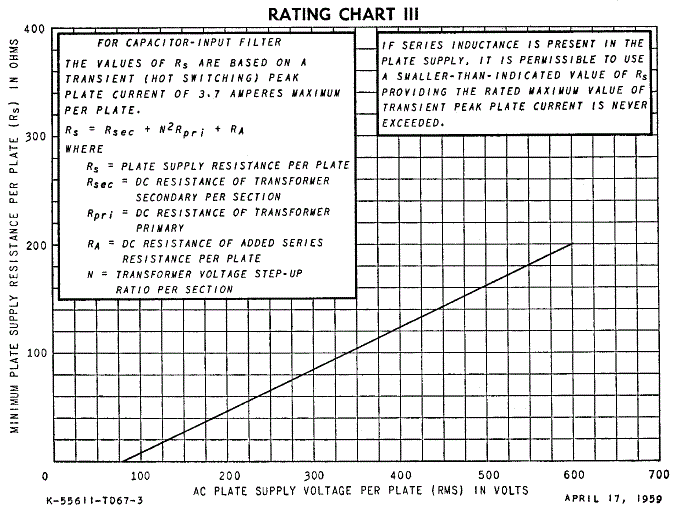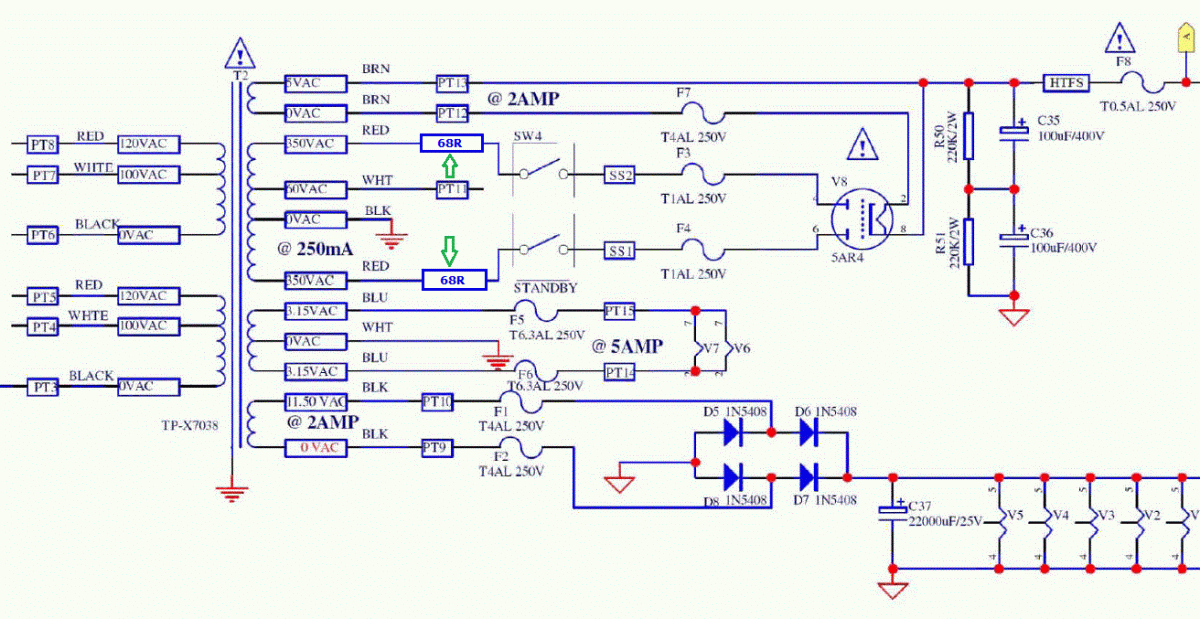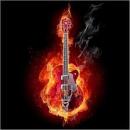Ikazategi, si me permites abusar de tu tiempo en caso de que vuelvas a pasarte por aquí... Al parecer algunos Epiphone BC30 han tenido problemas con el transformador y la válvula en cuestión. No es mi caso porque todavía le he dado apenas uso. Pero he encontrado alguien que sugiere una solución preventiva. Consiste simplemente en intercalar un par de resistencias entre el trafo y la válvula rectificadora para limitar la corriente. Es sencillo y como más vale prevenir... Me gustaría saber tu opinión:
"I've just found another design flaw that may be the sole reason the BC30 self destructs. There is not enough limiting resistance before the rectifier. Limiting resistance helps keep ripple current within limits and is stated on the datasheet.

It is worth noting that the choke will slightly lower the required limiting resistance, but not by much. The above datasheet chart provides the calculation necessary to determine the limiting resistance provided by the transformer:
Rs = Rsec + N2Rpri
I have measured Rpri to be 5.5R and Rsec to be 37.5R (75R for the entire winding) so...
Transformer ratio N = 350 / 240 = 1.45 so...
37.5 + (1.45 * 1.45 * 5.5) = 49R
The chart shows that for a 350V tap, the limiting resistance needs to be around 105R for EACH PLATE of the rectifier, and this is for a fresh valve manufactured to 1959 standards. So lets assume 115R will be safer for modern 5AR4s,
115R - 49R = 66R
68R is the nearest standard resistor, two of these should be chassis mounted inside the amp, and the transformer secondary taps (350V) should be wired directly to these and then the other ends of the resistors wired to the PCB. I recommend 25W types, as the voltage rating should be in the region of 550V. The working voltage in practice will be much much lower than this but at the moment of power on, it will be higher and it's nice to know that nothing can go wrong! I over spec almost everything in my amps!
BTW, using the standby switch makes the problem worse because the rectifier is fully ready to conduct. If you are unlucky enough to flip the switch at the moment the mains AC voltage is at it's peak then destruction is almost guaranteed. Starting the amp from cold (without the standby) will slightly reduce the likelihood of failure. So, for a happy BC30, don't use the standby and install limiting resistors!

 ).
). ).
).









